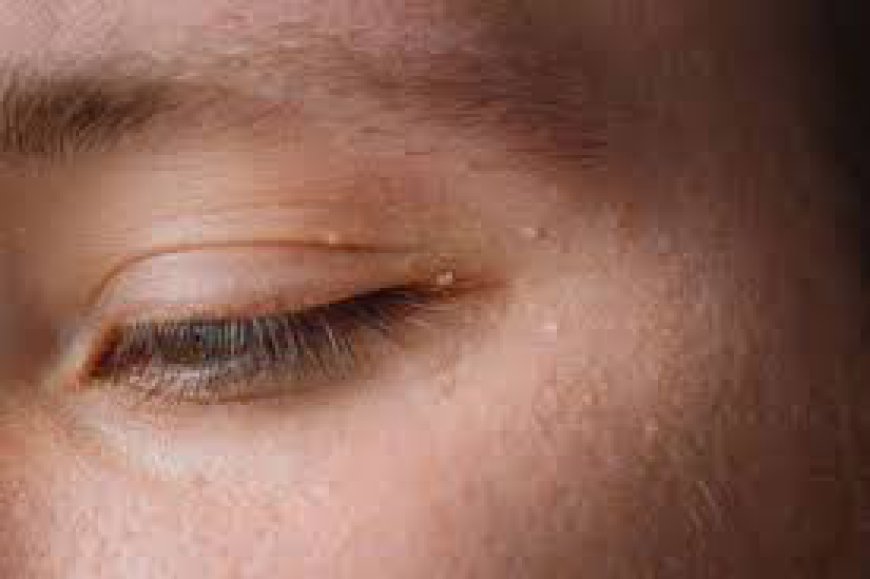Milia are small, white cysts that commonly appear on the face, particularly around the eyes and cheeks. While they are harmless and often painless, many individuals seek ways to remove or reduce the appearance of these pesky skin bumps. Fortunately, there are several quick and easy Milia Treatments in Dubai that you can try at home or with professional help. This article will explore effective options to help you achieve smoother, clearer skin without spending a fortune or enduring lengthy procedures.
Understanding Milia
Before diving into treatments, it's important to understand what milia are and how they form. Milia occur when keratin, a protein found in the skin, becomes trapped beneath the surface. They are often mistaken for whiteheads but are different in that they do not have an opening for drainage. Milia can develop at any age, but they are particularly common in newborns and young children, as well as adults with certain skin types or conditions.
While milia are not harmful, their appearance can be bothersome. Many people feel self-conscious about them, leading to a desire for effective removal strategies. Thankfully, a variety of quick and easy milia treatments are available to address this concern.
Home Remedies for Milia
1. Exfoliation
One of the simplest ways to prevent and treat milia is through regular exfoliation. By removing dead skin cells, you can help prevent the buildup that leads to milia formation. Using a gentle exfoliating scrub or a chemical exfoliant containing alpha hydroxy acids (AHAs) or beta hydroxy acids (BHAs) can be beneficial.
Incorporate exfoliation into your skincare routine two to three times a week. Be careful not to over-exfoliate, as this can irritate your skin and lead to more milia or other skin issues.
2. Steam Treatments
Steam treatments can help open up your pores and loosen any debris trapped beneath the skin. You can easily create a steam treatment at home by boiling water and then leaning over the bowl with a towel draped over your head to trap the steam.
Stay under the steam for about 5-10 minutes, allowing your skin to absorb the moisture. After steaming, gently exfoliate your skin to remove dead cells and any potential milia. This quick and easy treatment can be done once a week for optimal results.
3. Natural Oils
Certain natural oils, such as jojoba oil and coconut oil, can help moisturize the skin and promote healing. Jojoba oil closely resembles the skin's natural oils and can help balance oil production. Applying a few drops of these oils to the affected areas can help keep your skin hydrated and prevent the formation of new milia.
Use these oils as part of your nighttime skincare routine. Apply a small amount and massage it into your skin gently, allowing it to absorb overnight.
Professional Treatments for Milia
4. Extraction
If home remedies aren’t providing the results you want, consider visiting a dermatologist for professional extraction. This quick and easy treatment involves using a sterile needle or a comedone extractor to carefully remove the milium.
The procedure is relatively painless and can be completed in a matter of minutes. It's essential to seek treatment from a qualified professional to avoid scarring or infection.
5. Chemical Peels
Chemical peels are another effective option for treating milia. A chemical peel involves applying a solution that exfoliates the outer layers of skin, promoting cell turnover and helping to prevent milia formation.
This treatment can be tailored to your skin type and the severity of your milia. While some peels require downtime for recovery, there are also superficial peels that can provide results with minimal irritation.
Prevention Tips for Milia
6. Use Non-Comedogenic Products
To prevent milia from forming in the first place, it’s important to choose non-comedogenic skincare and makeup products. These products are formulated to avoid clogging pores, reducing the likelihood of milia development.
Check the labels of your products, and opt for those that are labeled as non-comedogenic or suitable for sensitive skin.
7. Stay Hydrated
Hydration plays a crucial role in maintaining healthy skin. Drinking plenty of water helps keep your skin hydrated and can support overall skin health. Aim for at least eight glasses of water a day to help your body function optimally.
8. Protect Your Skin
Sun protection is vital for maintaining healthy skin. Overexposure to the sun can lead to skin damage, which may contribute to the formation of milia. Always use a broad-spectrum sunscreen with an SPF of at least 30, even on cloudy days.
Incorporating hats or sunglasses into your outdoor routine can also provide additional protection for the delicate skin around your eyes.
Conclusion
Milia can be an annoying skincare issue, but with the right knowledge and treatments, you can effectively manage and reduce their appearance. Whether you choose to try simple home remedies like exfoliation and steam treatments or opt for professional help through extraction or chemical peels, there are numerous quick and easy milia treatments available.
Incorporate these strategies into your skincare routine, and you'll be on your way to achieving smoother, clearer skin. Remember to stay patient, as results may take time, and always consult with a dermatologist if you have concerns about your skin.


 laiba5656
laiba5656